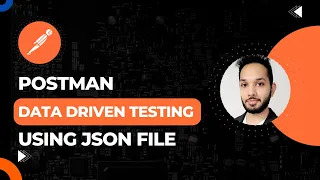#TestingEfficiency
Explore tagged Tumblr posts
Text
Hardness Tester- TEST-301
Hardness Tester- TEST-301Measuring tablet thickness, diameter and hardness the PHARMAG INSTRUMENTS TabTest-301 Tablet Hardness Tester is both USP and EP compliant and offers excellent flexibility and configurability. This robust 301 design removes the need for a thickness gauge, eliminating redundant calibrations and reducing overall testing cost.
Product Features:
USP PHARMACOPEIA AND EP COMPLIANT: Compliant with USP < 1217> and EP <2.9.8>.
MULTI-PARAMETER MEASUREMENTS: The TabTest -301 measures:
Thickness
Diameter
Hardness
LED DISPLAY: The seven-segment display provides calibration, thickness, diameter, and hardness results.
SMALL FOOTPRINT: Ideal for laboratories with limited bench space. The compact, lightweight design is well-suited for portability and use in a production setting.
"OPTIONAL" BUILT-IN PRINTER: Available with an optional 40-column built-in printer.
SAMPLE THROUGHPUT: Approximately 6-10 samples per minute.
"ADJUSTMENT FREE" TESTING JAWS: No adjustments needed for the test jaws. They are designed to suit all tablet shapes and sizes with a unique grooved design to properly align each tablet before testing.
Specifications:
Display: LED
Keypad: User-friendly 9-key operations
Hardness Range: 5 - 500 N
Hardness Accuracy: >1 N
Diameter and Thickness Range: 1.5 - 40 mm
Diameter Accuracy: >±0.06 mm
Measurements: Thickness and diameter in either mm or inches
Measurable Units:
N (Newton)
KP (KiloPond, 1 KP = 9.81 N)
Sc (Strong Cobb, 1 KP = 1.435 c)
Force Rate Constant (Linear): Force or constant (linear) speed
Number of Tests for Statistics: Up to 99
Stored Methods: Last test result
Calibration Procedure: Requires 10 mm Reference Block and 10 kg Reference Weight (Certified)
Calibration Technique: No tilt (user-friendly)
Distance Validation: 10 mm Certified Block (For Thickness and Diameter)
Load Cell Linearity: 3-Point Linear Calibration with Certified Weight (5, 10, 15 kg)
Load Cell Diagnostic Check: Yes (Check the Load Cell Signal Falls Within Range Before Making Any Further Calibration)
Self Test: Yes
Fault Localization: Yes (Text Format)
Load Cell Overload Protection: Yes
Password Protection: Yes (For Advance Settings)
Factory Setting Reset: Yes
Real-Time Clock: Yes
No Tablet Detection: Yes
Interface Ports:
RS-232 (Serial Port for Service Use Only)
External 80/40 Column Printer
40 Column Built-In Mini Dot Matrix Printer
Dimensions: 235 (L) x 420 (B) x 195 (H) mm
Weight: 16.5 lbs / (7.5 kg)
Electrical Power:
115V ± 15V, 50/60 Hz or
230V ± 23V, 50/60 Hz visit www.technovalue.in for more information
#TabletHardnessTester#TabTest301#HardnessTesting#TabletTesting#PharmaInstruments#TabletMeasurement#ThicknessTesting#DiameterMeasurement#USPCompliant#EPCompliant#PharmaCompliance#RegulatoryTesting#CostEffectiveTesting#NoRedundantCalibration#LabAutomation#SmartPharmaTesting#PrecisionTesting#TestingEfficiency#PharmaceuticalTesting#LabEquipment#PharmaceuticalLab#QualityControl#PharmaTech
0 notes
Text
Quality Assurance in Software Testing: Ensuring Reliable Software
Quality assurance in software testing is a critical process that ensures software meets the required quality standards before deployment. It plays a vital role in identifying and fixing defects, improving user experience, and maintaining a company’s reputation.
Here’s why quality assurance in software testing is essential:
Error Detection: QA testing identifies bugs and errors early, reducing costly fixes after deployment.
Enhanced User Experience: Ensures the software runs smoothly, meeting user expectations for performance and usability.
Cost-Effectiveness: Prevents major issues by catching them during development, saving time and resources.
Compliance Assurance: Ensures the software adheres to regulatory standards and industry-specific guidelines.
Key Practices in Quality Assurance:
Test Planning: Creating a detailed roadmap for the testing process.
Automation Testing: Using tools to improve efficiency and repeatability.
Manual Testing: Ensuring a human perspective on user interaction.
Continuous Monitoring: Maintaining software quality even after deployment.
Investing in quality assurance in software testing is not just about meeting standards; it’s about building trust with users and achieving long-term success.
By implementing robust QA processes, businesses can deliver reliable, high-quality software that drives customer satisfaction and loyalty. For comprehensive QA solutions tailored to your needs, consider reaching out to GenQE—a trusted partner in delivering top-notch quality assurance services.
0 notes
Text
Data Driven testing using Postman JSON file

Supercharge your API testing with data-driven testing using Postman and JSON files. In this interactive session, we'll explore how to harness the flexibility of JSON files to drive dynamic test scenarios. Learn how to parameterize requests, iterate through data sets, and validate responses dynamically. Elevate your testing efficiency, coverage, and maintainability with data-driven testing in Postman.
#DataDrivenTesting#APITesting#Postman#JSONFiles#DynamicTesting#TestAutomation#TestingTechniques#APIAutomation#TestingEfficiency#SDETUnicorns
0 notes
Text
AI-Enabled Testing Tools – The $7.5B Market You Need to Watch! 🤯🤖
AI-Enabled Testing Tools Market is projected to expand from $1.9 billion in 2024 to $7.5 billion by 2034, growing at a CAGR of 14.7%. This market focuses on integrating AI-driven automation, machine learning, and predictive analytics into software testing, ensuring efficiency, accuracy, and scalability in DevOps and agile environments.
To Request Sample Report : https://www.globalinsightservices.com/request-sample/?id=GIS23261 &utm_source=SnehaPatil&utm_medium=Article
Market Trends & Performance
Functional testing tools lead the market, leveraging AI to automate test case generation, execution, and bug detection.
Performance testing solutions are the second-largest segment, ensuring software stability under varying loads.
Security testing tools are gaining traction due to increasing cybersecurity risks and regulatory compliance needs.
North America dominates, driven by early AI adoption and strong software development ecosystems.
Europe ranks second, emphasizing quality assurance and compliance-driven AI testing adoption.
Asia-Pacific is emerging, fueled by digital transformation, IT expansion, and cloud adoption.
Key Growth Drivers
Rise of DevOps & Agile Testing — Increasing demand for continuous integration and continuous delivery (CI/CD) pipelines.
Growing Software Complexity — Need for end-to-end automation to handle diverse software ecosystems.
Advancements in AI & ML — AI-powered self-healing test automation and intelligent defect prediction.
Cybersecurity & Compliance Focus — AI-enhanced security testing to detect vulnerabilities in real-time.
Cloud & API Testing Growth — Adoption of cloud-native and microservices architectures driving automated testing demand.
Market Segmentation
Products: Automated Testing Tools, API Testing Tools, Mobile Testing Tools, Web Testing Tools
Technologies: AI, ML, NLP, Deep Learning, RPA, Computer Vision
Applications: BFSI, Healthcare, Retail, Telecom, Government, Manufacturing
Deployment: Cloud, On-Premises, Hybrid
Solutions: Test Automation, Test Execution, Test Management
The future of AI-enabled testing is driven by intelligent automation, predictive insights, and cloud-based solutions, creating significant growth opportunities for enterprises worldwide.
#aiinsoftwaretesting #testautomation #aienabledtesting #functionaltesting #performancetesting #agiletesting #devopstesting #cloudtesting #machinelearning #automationtools #artificialintelligence #cicd #softwarequality #apiintegration #mobiletesting #predictiveanalytics #intelligenttesting #roboticprocessautomation #deeplearning #cybersecuritytesting #bugtracking #aiqa #smartautomation #nlpforqa #autonomousqa #testingefficiency #cloudbasedqa #continuousdelivery #lowcodetesting #softwaretestingtrends #qualityengineering #testdatamanagement #cloudqa #aibasedtestautomation #microservicestesting #qaautomationtools #enterpriseqa #aiforsecurity #nextgentesting #smarttesting
0 notes
Text
Is your career at RISK without RISC-V? - Design and Reuse
Is your career at RISK without RISC-V? – Design and Reuse
PHY IP for LPDDR4x/4High-performance MCU core with privilege modes and MPU (32 or 64 bit)12 bit ADCSingle- and double-precision IEEE-754 floating-point unitUSB IP Cores for the Intel Pathfinder for RISC-V PlatformCEVA Joins Intel Pathfinder for RISC-V ProgramItoM is now part of the Bosch GroupIs your career at RISK without RISC-V?Right Python Framework Selection for Automation TestingEfficient…

View On WordPress
0 notes
Text

Machine Learning in Software Testing: Revolutionizing QA Processes
Machine Learning in Software Testing enhances accuracy and efficiency by automating repetitive tasks. It helps identify patterns, predict errors, and optimize testing cycles. Tools leveraging machine learning analyze vast data sets to ensure superior software quality. This advanced approach reduces time-to-market while improving overall reliability. Adopting machine learning in testing empowers teams with actionable insights, boosting productivity. As a result, software testing becomes more proactive, precise, and cost-effective, ensuring high-quality outcomes for users.
0 notes
Text
In today’s fast-paced software development, a robust quality management system (QMS) is essential for delivering top-notch software. To select the right QMS, consider factors like project size, testing types, and team structure. Integration with development tools, automation, AI features, and comprehensive reporting are crucial. User-friendliness, scalability, and cost-effectiveness further enhance the decision-making process. GenQE stands out with AI-driven test case automation, defect prediction, and dynamic updates, streamlining testing while reducing errors. Its advanced reporting, intuitive interface, and scalability make it an ideal choice for improving quality assurance and software development efficiency. Discover how GenQE can elevate your quality management strategy!
If you want to get complete information related to this topic click HERE.
#QualityManagementSystem#software testing#genqe#testcasegeneration#DefectManagement#TestingEfficiency#softwarequality#software development
0 notes
Text
Machine learning (ML) is revolutionizing software testing by automating and optimizing key processes. GenQE leverages ML to enhance testing efficiency, accuracy, and coverage. Key algorithms used in GenQE include regression testing to prioritize critical areas, test automation for repetitive tasks, defect prediction to identify high-risk code, and anomaly detection for performance and security issues. The benefits of ML in testing are significant: increased efficiency, improved test coverage, early bug detection, optimized test execution, and enhanced accuracy. By adopting ML, GenQE helps organizations deliver reliable software products faster, making machine learning an essential tool in modern software development.
If you want to get complete information related to this topic click HERE.
#machinelearning#software testing#automation testing#softwarequality#GenQE#TestingEfficiency#AIInTesting#software development#DigitalTransformation#testingsolutions
1 note
·
View note